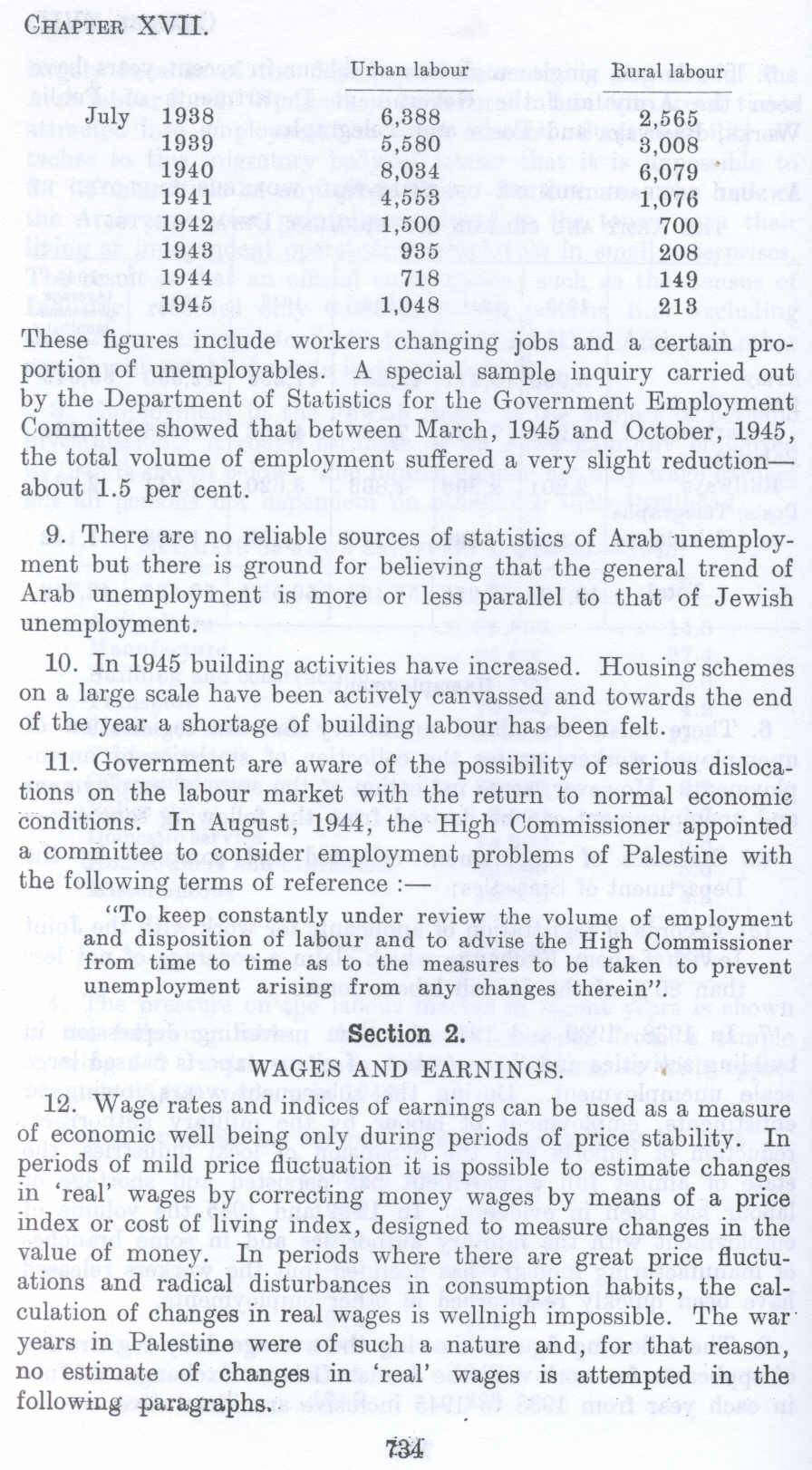| Prev | Next |  |
| Prev | Next |
| PalestineRemembered | About Us | Oral History | العربية | |
| Pictures | Zionist FAQs | Haavara | Maps | |
| Search |
| Camps |
| Districts |
| Acre |
| Baysan |
| Beersheba |
| Bethlehem |
| Gaza |
| Haifa |
| Hebron |
| Jaffa |
| Jericho |
| Jerusalem |
| Jinin |
| Nablus |
| Nazareth |
| Ramallah |
| al-Ramla |
| Safad |
| Tiberias |
| Tulkarm |
| Donate |
| Contact |
| Profile |
| Videos |
Wages and Earnings in Palestine before 1948 (Nakba), British Mandate: A Survey of Palestine: Volume II - Page 734. Chapter XVII: Labour And Wages: Section 2 |
Disclaimer
The above documents, article, interviews, movies, podcasts, or stories reflects solely the research and opinions of its authors. PalestineRemembered.com makes its best effort to validate its contents.


Post Your Comment
*It should be NOTED that your email address won't be shared, and all communications between members will be routed via the website's mail server.
Urban labour Rural labour
July 1938 6,388 2,565
1939 5,580 3,008
1940 8,034 6,079
1941 4,553 1,076
1942 1,500 700
1943 935 208
1944 718 149
1945 1,048 213
These figures include workers changing jobs and a certain proportion of unemployables. A special sample inquiry carried out by the Department of Statistics for the Government Employment Committee showed that between March, 1945 and October, 1945, the total volume of employment suffered a very slight reduction about 1.5 per cent.
9. There are no reliable sources of statistics of Arab •unemployment but there is ground for believing that the general trend of Arab unemployment is more or less parallel to that of Jewish unemployment.
10. In 1945 building activities have increased. Housing schemes on a large scale have been actively canvassed and towards the end of the year a shortage of building labour has been felt.
11. Government are aware of the possibility of serious dislocations on the labour market with the return to normal economic conditions. In August, 1944, the High Commissioner appointed a committee to consider employment problems of Palestine with the following terms of reference :-
"To keep constantly under review the volume of employment and disposition of labour and to advise the High Commissioner from time to time as to the measures to be taken to prevent unemployment arising from any changes therein".
Section 2.
WAGES AND EARNINGS.
12. Wage rates and indices of earnings can be used as a measure of economic well being only during periods of price stability. In periods of mild price fluctuation it is possible to estimate changes in 'real' wages by correcting money wages by means of a price index or cost of living index, designed to measure changes in the value of money. In periods where there are great price fluctuations and radical disturbances in consumption habits, the calculation of changes in real wages is wellnigh impossible. The war years in Palestine were of such a nature and, for that reason, no estimate of changes in 'real' wages is attempted in the following paragraphs ..
Page 734